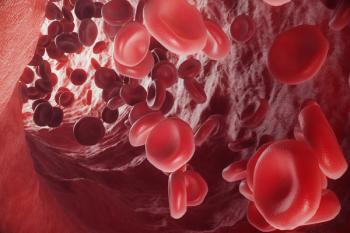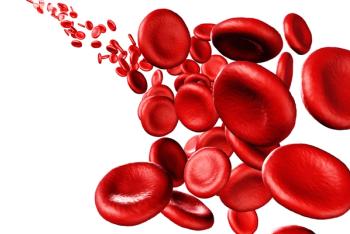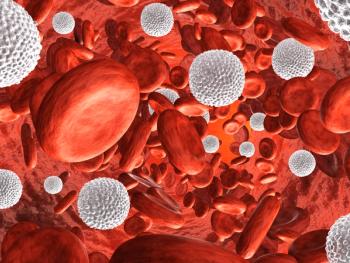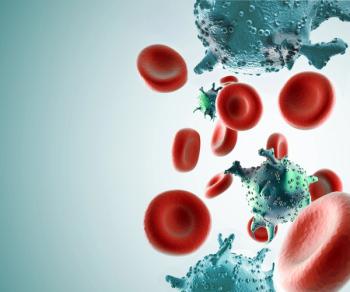
Ongoing Trials May Elucidate Mosunetuzumab Efficacy in Follicular Lymphoma
Investigators are currently evaluating mosunetuzumab in relapsed disease or comparing it with rituximab in treatment-naïve follicular lymphoma.
No clear subgroup benefit emerged while evaluating mosunetuzumab-axgb (Lunsumio) in patients with previously untreated, low-tumor burden follicular lymphoma, according to John M. Burke, MD.
CancerNetwork® spoke with Burke, a board-certified hematologist and medical oncologist of the Rocky Mountain Cancer Centers, about next steps for research regarding mosunetuzumab in treating patients with follicular lymphoma, as well as whether any patient subgroup experienced an increased benefit with treatment. Burke presented findings from the phase 2 Morningsun trial (NCT05207670) evaluating mosunetuzumab in patients with previously untreated, low-tumor burden follicular lymphoma at the
Burke began by highlighting 2 additional trials evaluating mosunetuzumab in patients with follicular lymphoma. One phase 1/2 trial (NCT02500407) is currently evaluating mosunetuzumab in patients with relapsed or refractory disease.2 Another ongoing trial, the phase 3 SWOG-2308 trial (NCT06337318), is comparing the safety and efficacy of mosunetuzumab with rituximab (Rituxan) in patients with low-tumor burden follicular lymphoma.3
When asked about whether there was any notably higher benefit with mosunetuzumab for any patient subgroups in the Morningsun trial, he explained that there were none he could observe, aside from distinguishing between different lines of therapy.
Data from the Morningsun trial revealed that of patients with at least 1 post-baseline tumor assessment (n = 60), the objective response rate was 95.0% (95% CI, 86.1%-99.0%), with a complete metabolic response (CMR) rate of 83.3% (95% CI, 71.5%-91.7%). Additionally, the median time to response was 2.8 months (range, 2.3-8.3), with 48 ongoing CMRs and 5 partial metabolic response instances at data cut-off.
Furthermore, among patients evaluable for safety (n = 64), the most common adverse event (AE) was injection-site reaction (70.3%). Additionally, cytokine release syndrome events occurred in 30 (46.9%) patients, and 8 were hospitalized for serious AEs.
There were 2 instances of suspected immune effector cell-associated neurotoxicity syndrome (ICANs; confusional state). Additionally, infections occurred in 30 (46.9%) patients, with 7.8% of patients experiencing grade 3 infection. A single grade 5 AE occurred 13.7 months after treatment was completed, the cause of which was unknown.
Transcript:
There are ongoing trials [evaluating] mosunetuzumab in patients with relapsed follicular lymphoma, and, as I mentioned a minute ago, with [the phase 3 SWOG-2308] trial comparing it with rituximab in treatment-naive, low-tumor burden follicular lymphoma. Those are some of the ongoing research questions that have been looked at... At this point, I do not know about one subgroup vs another subgroup as distinguishing [benefit] other than line of therapy.
References
- Burke JM, Flinn IW, Budde E, et al. Fixed-duration subcutaneous mosunetuzumab is active and has a manageable safety profile in patients with previously untreated, low-tumor burden follicular lymphoma: updated results from the phase II Morningsun study. Blood. 2024;144(suppl 1):3008. doi:10.1182/blood-2024-194604
- Budde LE, Assouline S, Sehn LH, et al. Durable responses with mosunetuzumab in relapsed/refractory indolent and aggressive B-Cell non-Hodgkin lymphomas: extended follow-up of a phase I/II study. J Clin Oncol. 2024;42(19):2250-2256. doi:10.1200/JCO.23.02329
- Comparing rituximab and mosunetuzumab drug treatments for people with low tumor burden follicular lymphoma. ClinicalTrials.gov. Updated December 9, 2024. Accessed December 11, 2024. https://tinyurl.com/bde32xkd
Newsletter
Stay up to date on recent advances in the multidisciplinary approach to cancer.

















































































